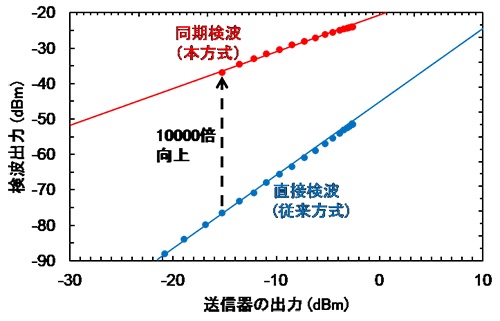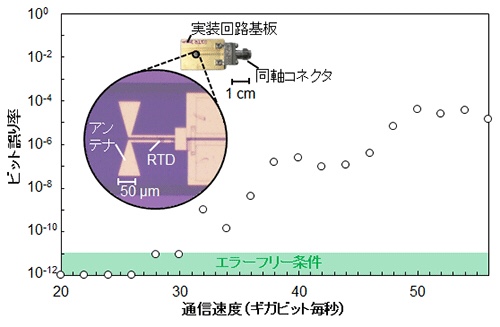


Osaka Univ:Detection sensitivity of electromagnetic terahertz wave by 10,000 times: Scientific Reports
-New tech that opens up the practical application of ultra-high-speed wireless communication beyond 5G–
Osaka University / ROHM / JST
Osaka University and ROHM Co., Ltd. have achieved a significant improvement of “10,000 times the detection sensitivity of terahertz waves” (Figures 1 and 2).
Small electronic devices that can detect terahertz waves: Resonant tunnel diodes (RTDs)
The experiment was successful.
Points of successful experiment:
The terahertz wave detection sensitivity of resonant tunneling diodes, which are small electronic devices capable of detecting terahertz waves, has been improved 10,000 times by synchronous detection.
Terahertz waves are expected to be applied to ultra-high-speed wireless communications and high-resolution sensing, but there is a problem that their generation and detection techniques are immature.
Succeeded in the world’s fastest terahertz wireless communication experiment using resonant tunneling diodes.
Expected to be applied to next-generation wireless communications, spectroscopic analysis, non-destructive inspection, security cameras, high-resolution radar, etc.
Research Group: Details of Implementation
Focus on resonant tunneling diodes, which are electronic devices that can operate in the terahertz band.
The resonant tunneling diode is operated as an oscillator and synchronized with the terahertz wave to be detected.
With this, we succeeded in improving the detection sensitivity of terahertz waves 10,000 times.
In addition, the world’s fastest wireless communication at 30 gigabits per second is realized.
Terahertz waves: Application fields
Next-generation ultra-high-speed wireless communication (beyond 5G)
Spectroscopic analysis,
Nondestructive inspection, measurement,
Security application,
Such as high resolution radar
It is expected that the movement toward practical use will accelerate.
The results of this research will be published online in the scientific journal “Scientific Reports” on December 2, 2019 (Japan time).